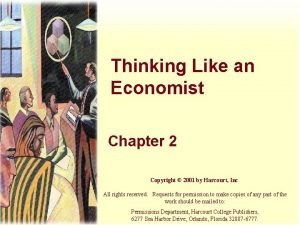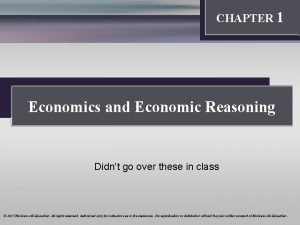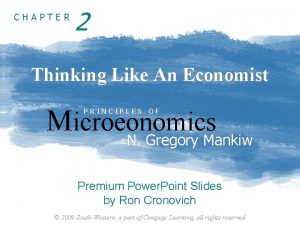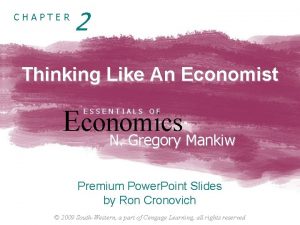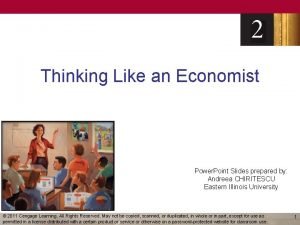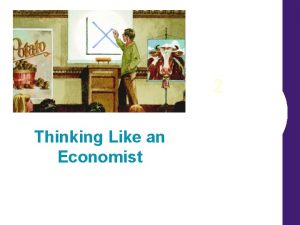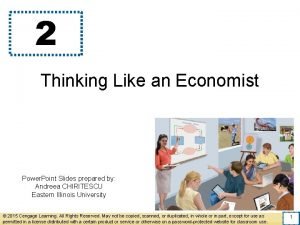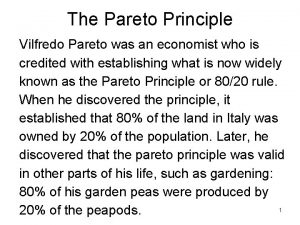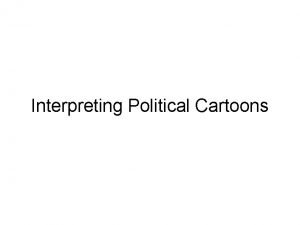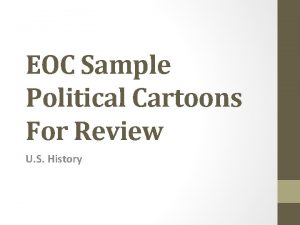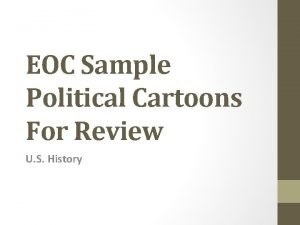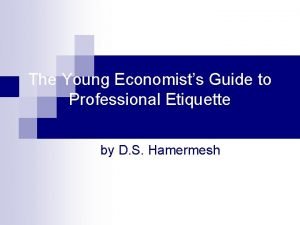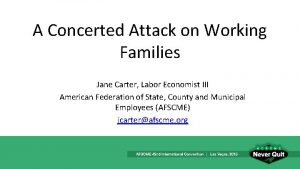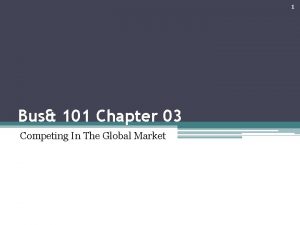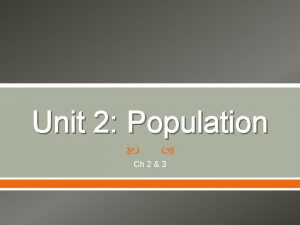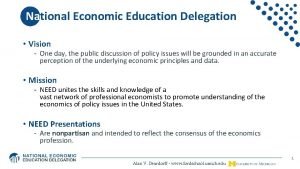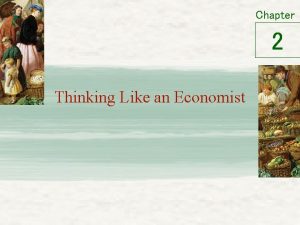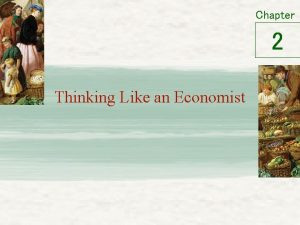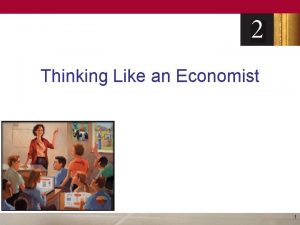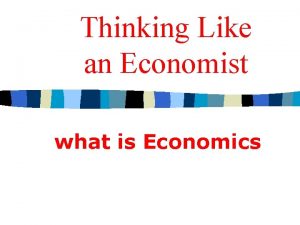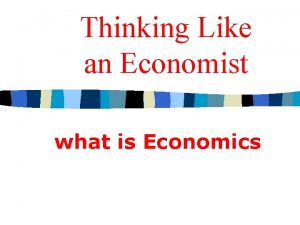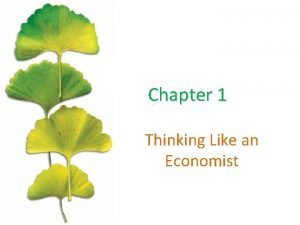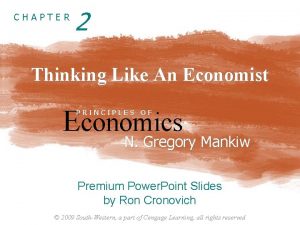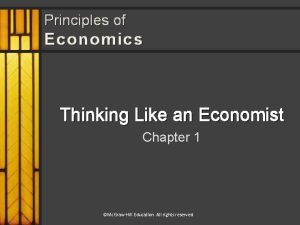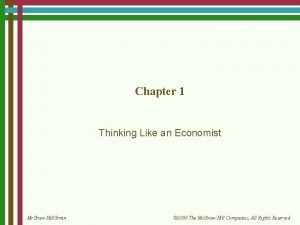1 THINKING LIKE AN ECONOMIST Chapter 2 2















- Slides: 15

1 THINKING LIKE AN ECONOMIST Chapter 2

2 Learning economics • Economists have a special way of thinking • Learning economics will allow you to understand it • You will begin – To think in terms of alternatives – To understand the cost of individual and social choices – To see how certain events and issues are related with one another • The economic way of thinking involves thinking analytically and objectively like the scientific method

3 The Scientific Method • Science develops by using abstract models to help explain how a complex, real world operates • Theories are proposed, data is collected analysed to prove or disprove theories • Theories always include abstact models • Models permit to analyse a complex real world event in a simple manner • Science uses two approaches: • Descriptive (reporting facts, etc. ) • Analytical (abstract reasoning)

4 The Circular-Flow Model • The circular-flow model is a simple way to show visually the economic transactions that occur in the economy • It is simple because we assume that there is no government, no financial system, no outside world (foreign trade), etc. • And concentrate on two categories of major economic actors in the economy – Households as consumer and owners of factors of production – Firms as producers

5 The Circular-Flow Diagram

6 Microeconomics and Macroeconomics • An important distinction exist between micro (from Greek word small) and macro (from Greek word big) economics • Microeconomics focuses on the individual parts of the economy • It corresponds to the first two groups among the Ten Principles • Macroeconomics looks at the economy as a whole • It corresponds to the last group among the Ten Principles

7 The Production Possibilities Frontier • The production possibilities frontier is another example using a simple model to understand complex reality • It is graph showing the various combinations of output of two products that the economy can possibly produce given the available factors of production and technology • It illustrates – Efficiency – Tradeoffs – Opportunity Cost – Economic Growth

8 Production Possibilities Frontier Quantity of Computers Produced 3, 000 D C 2, 200 A 2, 000 1, 000 Production possibilities frontier B 0 300 600 700 1, 000 Quantity of Cars Produced

9 Production Possibilities Frontier Quantity of Computers Produced 4, 000 3, 000 2, 100 2, 000 E A 0 700 750 1, 000 Quantity of Cars Produced

10 Two Roles of Economists • Social reality imposes additional constraints on the economics as a discipline • Economics as a science requires economists to understand explain the world • As such they are scientists • But governments also asks economists to apply their knowledge to change the world • As such they become policymakers • Policymaking always involves politics • Their responsibilities as scientist and policymaker may easily be in conflict

11 Positive versus Normative Analysis • The potential conflict between science and policy leads to an important distinction in economics • Positive statements are statements that describe the world as it is • Positive economics also called descriptive analysis • Normative statements are statements about how the world should be • Normative economics are also called prescriptive analysis

12 Positive and Normative Statements • Here are some exemples of positive and normative statements by economists • An increase in the minimum wage will cause a decrease in employment among the least-skilled • Higher budget deficits will cause interest rates to increase • The income gains from a higher minimum wage are worth more than any slight reductions in employment

13 Why Economists Disagree • Economists are well known to disagree among themselves • There are many jokes about economist • They may disagree on theories about how the world works due to analytical premises • At the same time usually they may hold different values and thus, different normative views • Unfortunately many charlatans and cranks also pose as economists and often obscure the consensus among economists

14 Examples of What Most Economists Agree On • A ceiling on rents reduces the quantity and quality of housing available • Tariffs and import quotas usually reduce general economic welfare • Flexible and floating exchange rates offer an effective international monetary framework • Printing too much money always causes inflation

15 Conclusion • Economics uses the scientific method • Abstract models simplify otherwise very complex real world • Economics is divided into microeconomics and macroeconomics • Economics relies on both positive and normative analysis • Economists often disagree among themselves
 Thinking like an economist chapter 2
Thinking like an economist chapter 2 Thinking like an economist chapter 1
Thinking like an economist chapter 1 Chapter 2 thinking like an economist
Chapter 2 thinking like an economist Chapter 2 thinking like an economist summary
Chapter 2 thinking like an economist summary Thinking like an economist chapter 2
Thinking like an economist chapter 2 Thinking like an economist summary
Thinking like an economist summary Thinking like an economist ppt
Thinking like an economist ppt Pareto economist
Pareto economist Planned economy or planned destruction political cartoon
Planned economy or planned destruction political cartoon Sample of political cartoon
Sample of political cartoon A wise economist asks a question meaning
A wise economist asks a question meaning The young economist's guide to professional etiquette
The young economist's guide to professional etiquette Jane carter labor economist
Jane carter labor economist Economist.com
Economist.com Economist.com
Economist.com Economist china trade
Economist china trade
